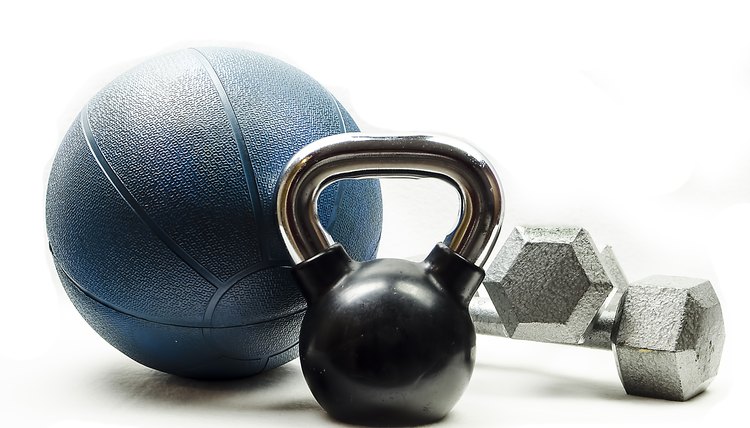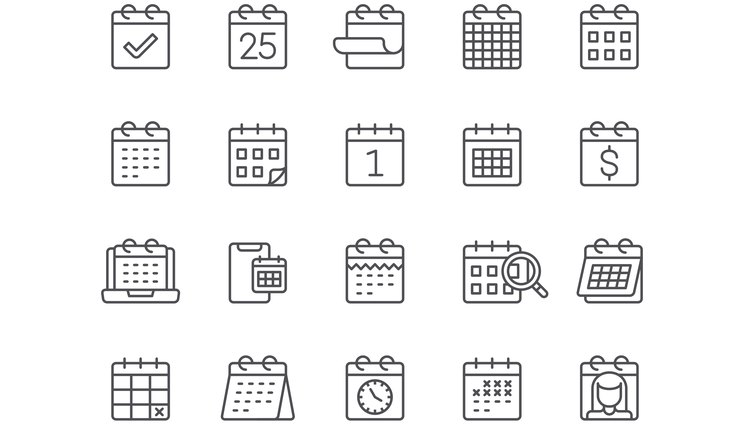What does fact checked mean?
At SportsRec, we strive to deliver objective content that is accurate and up-to-date. Our team periodically reviews articles in order to ensure content quality. The sources cited below consist of evidence from peer-reviewed journals, prominent medical organizations, academic associations, and government data.
The information contained on this site is for informational purposes only, and should not be used as a substitute for the advice of a professional health care provider. Please check with the appropriate physician regarding health questions and concerns. Although we strive to deliver accurate and up-to-date information, no guarantee to that effect is made.
How to Do a Pelvic Thrust Abdominal Workout (with Video)

Your abdominal muscles -- including your rectus abdominis, transversus abdominis and obliques -- work dynamically to flex your spine forward and contract isometrically to keep your spine stable. In a pelvic thrust workout, you can challenge your abs and lower back both dynamically and isometrically. For this workout, you'll need an exercise mat. Start out by performing the exercises without any weights. Once you've built abdominal strength and are ready for a greater challenge, you can incorporate a dumbbell or medicine ball into these pelvic ab exercises.
Straight-Leg Pelvic Thrust
The straight-leg pelvic thrust works your rectus abdominis and oblique muscles dynamically and is a good bodyweight ab workout for beginners. To get into a starting position, lie on your back on an exercise mat with your arms down by your sides and your legs extended and held pointed up toward the ceiling. Thrust your pelvis forward by lifting your hips upward until your upper glutes are entirely off the floor. Your legs should remain vertical throughout the entire movement. Control your hips back down to the mat and exhale. If you want a bigger challenge, squeeze and hold a medicine ball in between your feet. To also work your rectus abdominis and obliques isometrically, hold your hips off the floor a few seconds before lowering them to the mat.
Single-Leg Pelvic Thrust
Single-leg pelvic thrusts strictly challenge the core strength in your transversus abdominis, rectus abdominis and obliques to work isometrically. To start this core exercise, lie on your back on a mat with your knees bent, your feet flat on the floor and your arms down by your side. Extend one knee so that one leg is fully straight. From this position, thrust your pelvis upward by lifting your hips off the floor. Lift your hips until your torso and thighs create a straight line. Hold this position for a moment and then return your hips to the mat. Repeat the exercise with your other leg extended and then continue to switch legs with every rep. Your glutes and hamstrings handle lifting your hips off the floor. However, as you thrust your pelvis and lift your hips, your abdominals isometrically contract to keep your spine stabilized. To make single-leg pelvic thrusts more challenging, maintain the top position with your hips raised for 10 to 20 seconds before lowering your hips to the mat. You can also hold a dumbbell or medicine ball against the front of your hips.
Pelvic Tilt
If you're tired of the hip thrust movement, try a pelvic tilt exercise. This is one of the best exercises for your core muscles and hip flexors. Start the pelvic tilt by lying on your back with your feet on the floor, this should lift your lower abs off the floor. Move the hips in your lower body toward your head which will press your lower back on the floor. Then return to neutral position.
Workout Structure

vadimguzhva/iStock/Getty Images
Take five minutes to walk, jog or other cardio exercise to warm up your abdominal muscles before each workout. Begin with straight-leg pelvic thrusts, completing two to three sets of 20 to 30 repetitions. If you get to 30 reps and your abs aren’t fatigued, increase the intensity with a medicine ball. Next, complete single-leg pelvic thrusts, performing two to three sets of 15 to 20 reps. Add a medicine ball or dumbbell if completing 20 reps isn’t challenging. Rest for 30 to 60 seconds in between each set. At the end of every session, stretch your abs by lying on your stomach and then pushing off the floor with your hands to arch your back so that your head and shoulders are near vertical. Do the stretch two to three times, holding it for 20 to 30 seconds each time.
Scheduling Your Workout

vadimguzhva/iStock/Getty Images
Your abdominal muscles need time to rest and heal between workouts. It’s during this rest time that your muscles increase in tone and strength. Therefore, if you incorporate any non-pelvic-thrust abdominal exercises into your weekly workouts, such as crunches or planks, schedule them on the same day as the pelvic thrust exercises. This ensures that your abdominals get full rest days. Schedule your abdominal workouts two to three days per week and make sure there are one to two days off in between. You can fill these days off with other strength training programs like leg workout routines full of squats or arm days.
References
Writer Bio
Kim Nunley has been screenwriting and working as an online health and fitness writer since 2005. She’s had multiple short screenplays produced and her feature scripts have placed at the Austin Film Festival. Prior to writing full-time, she worked as a strength coach, athletic coach and college instructor. She holds a master's degree in kinesiology from California State University, Fullerton.
